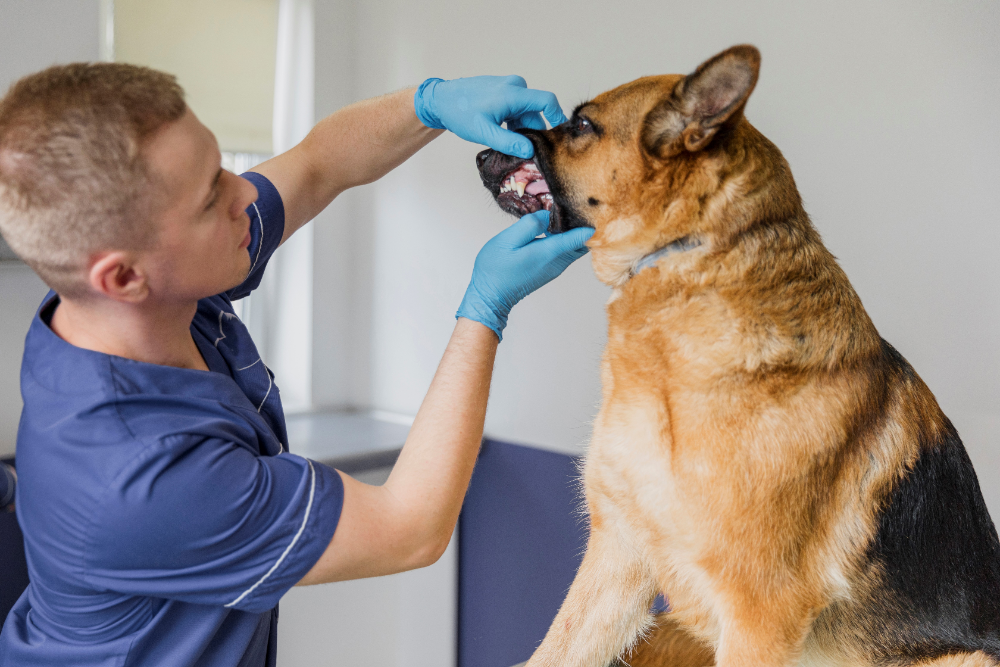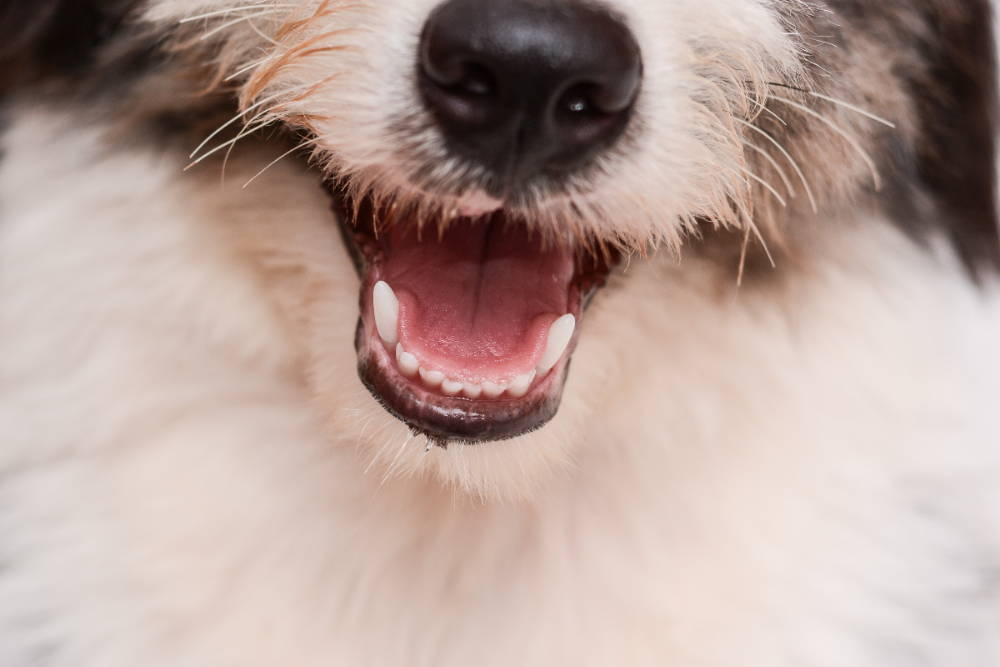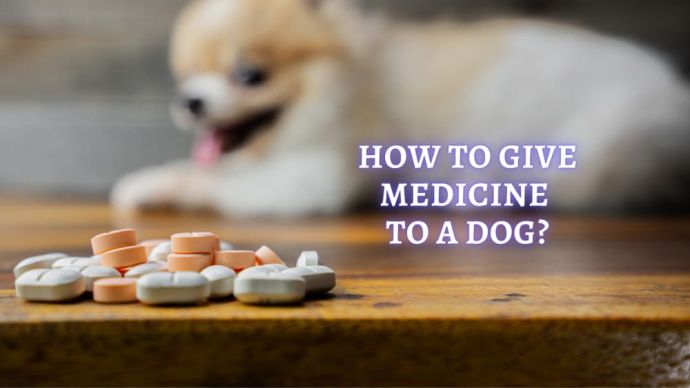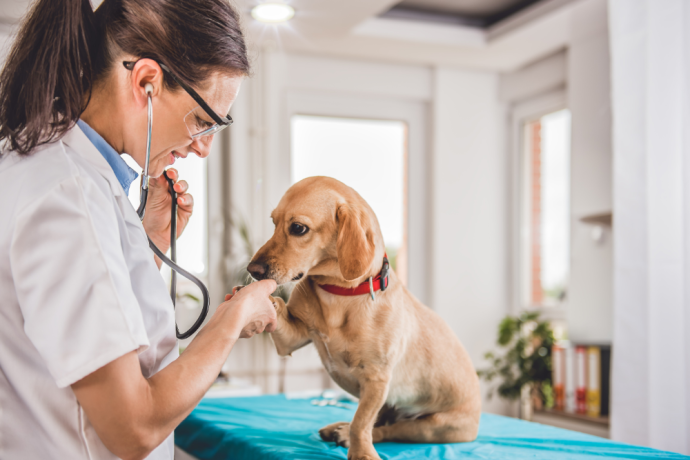Healthy Dog Gums: What Color should a Dog’s Gums be?
Written by:
Author: Dr. Chyrle Bonk
Dr. Chyrle Bonk is an associate veterinarian since 2010 and was a volunteer for Clearwater County Youth 4H. Dr. Bonk contributed to various animal and veterinary related websites and magazines as a way to help keep animals across the globe safe and healthy. When Chyrle not working she spends her time with her own furry crew of dogs, cats, and horses.
View all 10 articlesLearn about our editorial process and veterinary review board.
Viewed: 1030
Updated on: 07/01/2021
Most dog parents don’t think about their dog’s gums daily, and why should they? You may think that gums aren’t as important to pay attention to as other things, say your dog’s bowel movements or eating habits. The truth is, the color and feel of your dog’s mouth say a lot about what’s going on inside of their body. So, it is time to learn what your dog’s gum color and feel mean, but you also need to get comfortable checking them.
How to Check Your Dog’s Gums
Before we talk anything about what healthy dog mouth are supposed to look like, let’s first learn how to safely check them. Most dogs are relatively comfortable with us looking at their mouth, but a few might take your lifting of their lip as a threat. First off, check it while in the middle of a play or attention session. The more slyly you can slip it in, the better, especially for those dogs that may be a little more sensitive. While petting your pup’s face and head, gently lift their lips to expose their teeth and gums. You can also try pulling their lower lip down simultaneously to get a view of the whole picture. You shouldn’t have to move their jaw, just the lips.
If your pup is comfortable with a quick look, the next step would be to touch the gums. The wetness, or dryness of the mouth, will give you an idea of your dog’s hydration status, an important tidbit if your pup is fighting off any illness. You can also take a capillary refill time by pressing it and then releasing your finger. Capillary refill time helps to measure your dog’s circulatory performance.
After you take your quick peek and touch, release the lips and give your pup lots of praise. For dogs that are a little more questioning of the idea, take it in slower steps. You may only touch their muzzle the first time, offer praise and then move onto lifting the lips. If your pup hesitates at any step, take a break, offer affection, and then try again later.
READ MORE: Best Dog Ear Cleaners
Normal Dog Gums
A healthy dog will have pink gums. Since there are various shades of pink, think bubble gum or salmon-colored. It’s perfectly normal for some dogs to have pigmented oral cavity, especially if they have to pigment on their lips or the roof of their mouths. For dogs with black, pigmented gums, you may have to search a little harder to access gum color, but usually, there are some areas of the gum that have spots of pink.
READ MORE: Can Older Dogs Eat Puppy Food?
Dogs that are properly hydrated will have slippery feeling gums, just like the dog slobber that you’re more than likely familiar with. Dehydrated dogs will have mouth that feel sticky or tacky, more like partially dried glue.
Normal capillary refill time for a healthy dog is under two seconds. This means that when you press on your dog’s gums, they will turn white, and then when you release your finger, they will turn back to pink in under two seconds. A slower than two second refill time could indicate a problem with circulation.
Abnormal Dog Gum Color
With every normal comes the abnormal and dog mouth are no exception. Besides the healthy pink, dog gums can turn a wide array of colors from various causes. Let’s take a look at what colors you may see when inspecting your pup’s gums and exactly what that color could mean.
1. Pale
I know, pink is already a pale color, but actually pale gums may appear white or very light pink. The capillary refill time will be hard to check as the whitening of the gums when you press them will be hard to differentiate from the initial color.
Pale gums are most commonly a sign of anemia or blood loss. Since blood is what gives gums their pink color, a decrease in the volume of circulating blood or in the hemoglobin content of that blood will cause the gums to appear paler. Anemia or blood loss can either be sudden (acute) or long term (chronic), so it’s important to check your dog’s gums frequently to get used to what’s normal.
2. Bright red
Sometimes a dog’s mouth can appear bright pink, think Fuschia, or even red. This coloring can either be right along the gum line or over the entire gum surface, indicating different issues.
Redness along the gumline is a common condition with dental disease. Unless your pup receives more than regular dental cleanings, they probably have a little of this redness. The coloring is simply due to inflammation from the tartar buildup near and under the gumline and usually goes away with a good dental cleaning.
Gums that are bright pink or red all over usually occur with heatstroke or some kind of overexertion. When a body is overly hot, blood vessels rise to the surface to dissipate heat more quickly, so the gums appear redder due to the close proximity of the blood vessels. The redness will usually disappear once the pup is cooled down.
Red color can also be a sign of toxin exposure, carbon monoxide poisoning, or high blood pressure. If you suspect your dog has any of these conditions, see your vet immediately.
- Blue or purple: Gums that are blue or purple tell us that they’re being deprived of oxygen. If your pup is having trouble breathing due to lung or upper respiratory issues like asthma or pneumonia, they may have blue gums. Heart disease or hypothermia can also cause bluish discoloration.
- Yellow: Yellow gums are usually tied to liver disease. Infection or cancer of the liver leads to a decrease infiltration of the blood that allows excess bilirubin to build up causing a yellow color to the mucous membranes. So, not only will the gums be yellow, but also the whites of the eyes and inside of the ears.
The breakdown of red blood cells can also cause yellow gums as bilirubin is a byproduct of this as well. Red blood cells can be broken down due to toxin exposure or an autoimmune disorder, to name a few.
READ MORE: Best Puppy Food
Other Gum Abnormalities
Color isn’t the only thing that can change about a dog’s gums. During one of your routine exams, you may find bleeding or even bumps. Bleeding can be fairly common if your pup is an indiscriminate chewer, meaning they’ll use anything to ‘sharpen’ their chewing skills and may cause scrapes and bruises on the gums. Bleeding can also be a result of dental disease, so if the blood accompanies bad breath and brown, tartar encrusted teeth, that’s probably the issue.
READ MORE: My Dog Eats Everything
READ MORE: Best Dog Toothpaste
Mouth are not immune from lumps and bumps; some are harmless and some can be terrible news. Any bump you find on your dog’s mouth should be seen by a veterinarian, especially if it’s fast-growing and oddly shaped or colored.
What to do About Your Dog’s Gum Color?
With the vast color palette that a dog’s mouth can go through, it may be a bit confusing as to what you should do about it. Generally speaking, if you’re concerned, see your vet. You can’t go wrong there, but let’s further break it down.
- Blue or purple gums are an immediate emergency. A body needs oxygen to survive so anytime there is a shortage getting to the tissues, it needs to be dealt with quickly.
- Bright red gums may need immediate action. If your pup has been outside running on a hot day and comes in panting with red gums, try to slowly cool them down. Offer them cool, not cold, water and a quiet, cool place to lay. If your pup is overly hot and dehydrated, see your vet. If you suspect toxin exposure or any of the other causes listed above, see your vet immediately.
- Yellow gums also warrant a trip to your vet. There will usually be other signs that go along with the discoloration, such as vomiting, inappetence, and diarrhea to warn you as well.
- Pale gums should get your pup to the vet as well. Since anemia and blood loss can be life-threatening, the sooner you figure it out, the better.
- Lumps or bumps, as we said before, need to be checked out.
- Dental disease may not be an immediate issue, but it should definitely be handled by a vet. Not only will your vet help get rid of your dog’s current dental issues, but they can also line you out on how best to prevent troubles in the future.
Think of your dog’s mouth as a window to their inner workings, it’s amazing what they can tell you! Take the time to get a look and feel for what their gums are like when they’re healthy and happy so that you’ll know when a change has occurred. Since most discolorations of the gums equal a trip to your veterinarian, be sure to check your dog’s mouth often and deal with any changes early on.
 Dog Training Dog is Acting like a Puppy again: Causes and Solutions from a Vet
Dog Training Dog is Acting like a Puppy again: Causes and Solutions from a Vet - 7225
- 4
 Dog Veterinary Tips Sick Puppy 101: How to know if your Puppy is Sick? (Vet Advice)
Dog Veterinary Tips Sick Puppy 101: How to know if your Puppy is Sick? (Vet Advice) - 1438
- 0
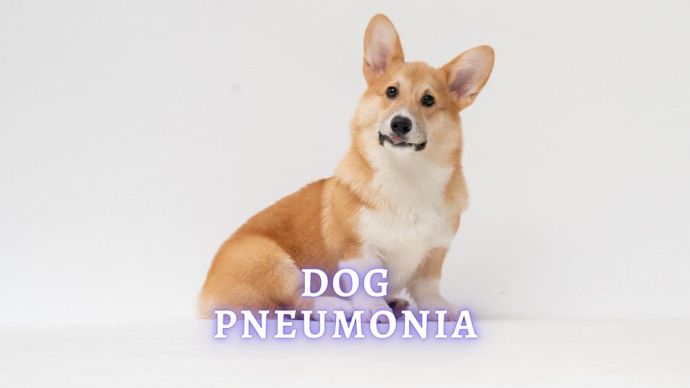 Dog Veterinary Tips Pneumonia in Dogs: Symptoms, Diagnosis, Treatment and Recovery (Vet Advice)
Dog Veterinary Tips Pneumonia in Dogs: Symptoms, Diagnosis, Treatment and Recovery (Vet Advice) - 478
- 0
 Dog Veterinary Tips Why is my Dog throwing up: Causes and Preventing (Veterinary Advice)
Dog Veterinary Tips Why is my Dog throwing up: Causes and Preventing (Veterinary Advice) - 23424
- 5
 Dog Veterinary Tips Why is my Dog throwing up: Causes and Preventing (Veterinary Advice)
Dog Veterinary Tips Why is my Dog throwing up: Causes and Preventing (Veterinary Advice) - 23424
- 5
 Dog Care Why Is My Dog Bleeding From Its Butt? Causes and treatment of rectal bleeding in the dog
Dog Care Why Is My Dog Bleeding From Its Butt? Causes and treatment of rectal bleeding in the dog - 22074
- 0
 Dog Care My Dog Keeps Scratching His Mouth: Reasons Why Your Dog Scratching Face
Dog Care My Dog Keeps Scratching His Mouth: Reasons Why Your Dog Scratching Face - 17560
- 1











